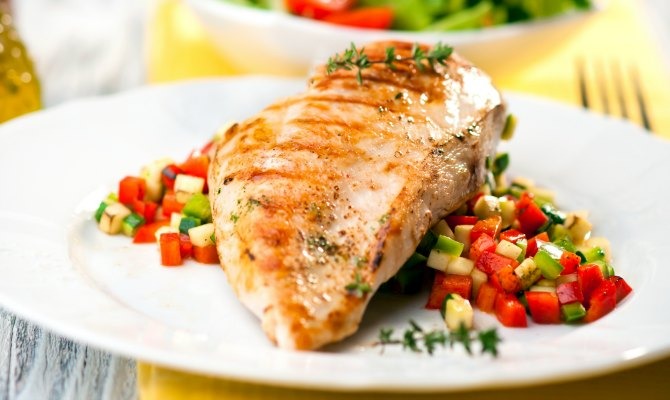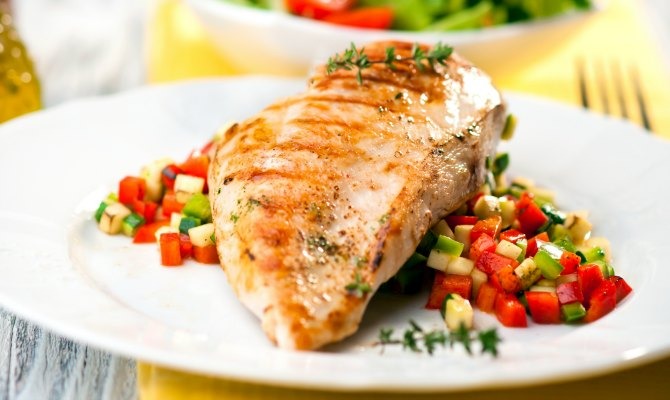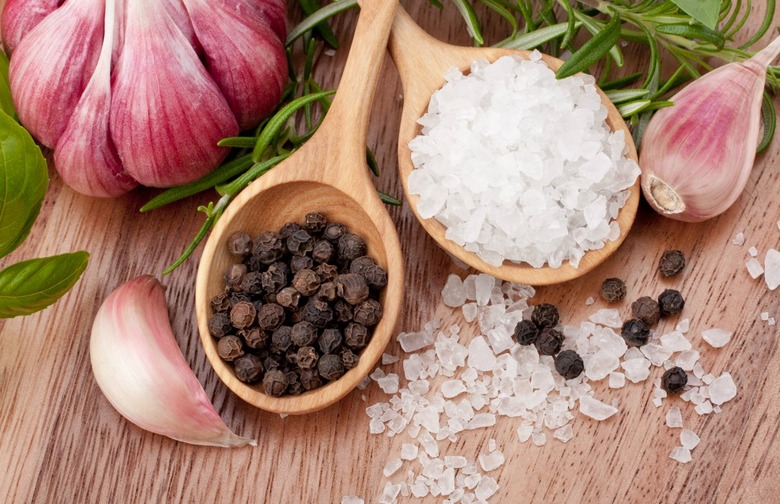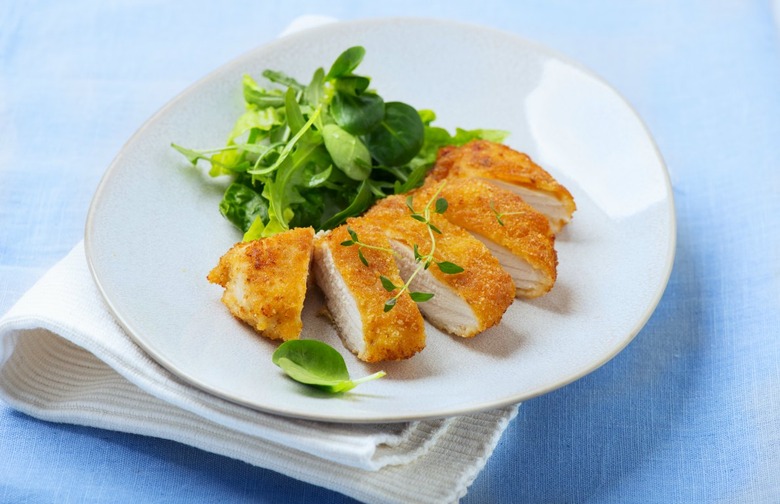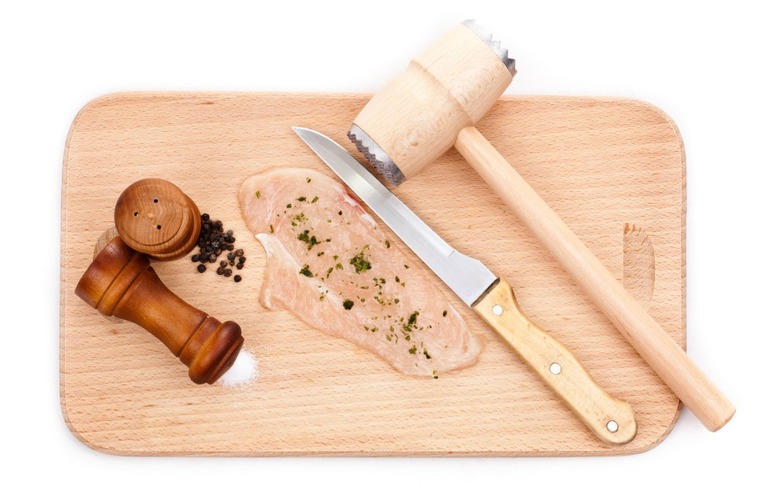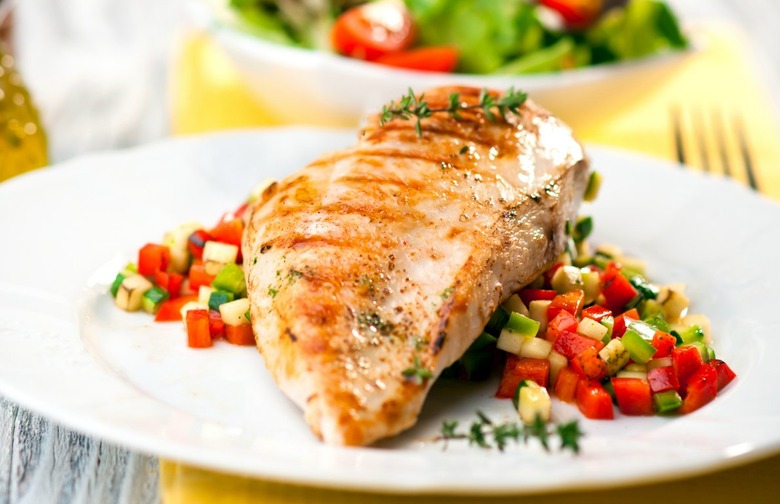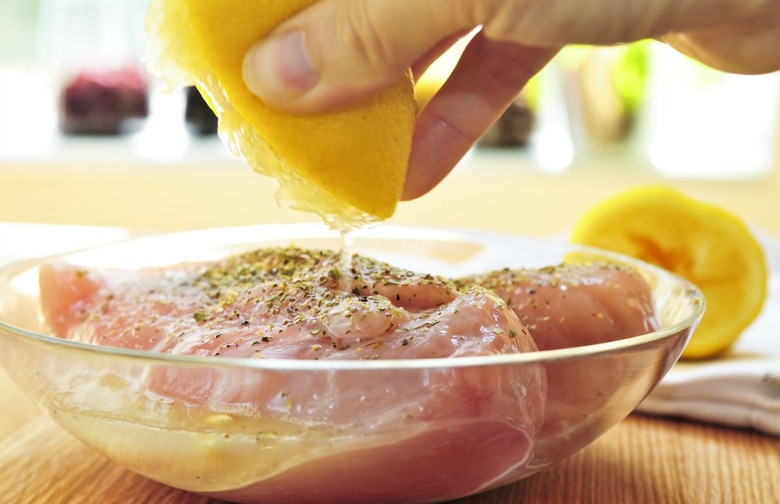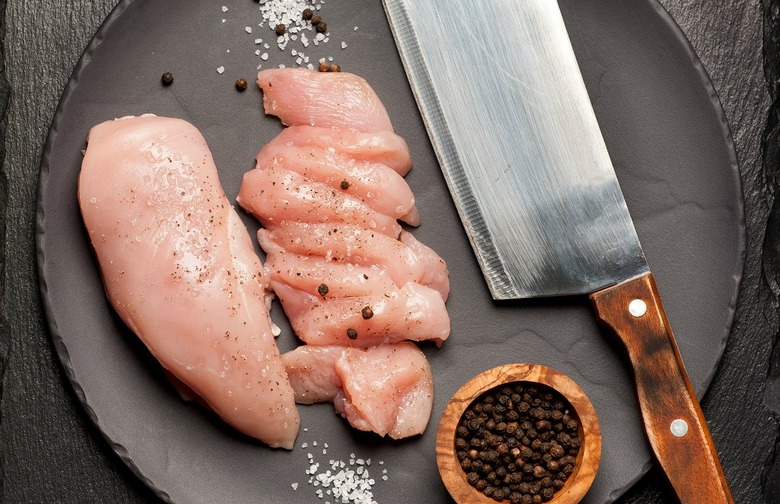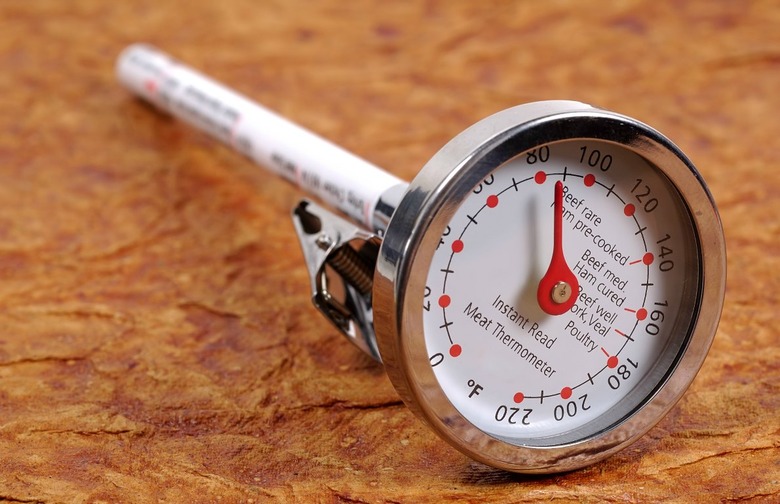8 Tips For Cooking A Juicy And Flavorful Chicken Breast
8 Tips for Cooking a Juicy and Flavorful Chicken Breast
Chicken breast is a great source of lean protein, but no one wants to eat it when it's tough, dry, and flavorless.
Brine the Chicken
Brining your chicken is well worth the extra time and effort. Letting the chicken soak overnight in a salty brine helps break down the poultry's protein structure, making it more tender, and allows more moisture to be absorbed back into the bird, which helps it stay juicy. If you add spices or sugar to your brine, you'll get extra flavor in your finished chicken breast.
Bread the Chicken
Much like the skin on a piece of chicken, an egg and breadcrumb coating traps moisture in chicken breast as it cooks. For easy breaded chicken, simply dredge the poultry into seasoned flour (flour with some added salt and pepper), then into a whisked egg, and finally into breadcrumbs.
Flatten the Chicken
One of the inherent problems with chicken breast is that one end is much thicker than the other. The amount of time needed to fully cook the thickest part of the chicken is much longer than what's needed for the thinner section, leaving it overcooked and dried out. An easy fix? Use a heavy object, like a rolling pin, to pound and flatten each piece of chicken to make it one, uniform thickness.
Let the Chicken Rest
Though we often remember to rest a roast or whole bird before carving it, most of us don't allow smaller cuts of meat or poultry to rest before slicing into them. It's important to let the cooked chicken breast sit for 5—10 minutes before serving; this allows the juices to redistribute themselves throughout the meat, making it juicier.
Marinate the Chicken
Marinades add flavor to otherwise bland chicken breast, and many of the common ingredients in your marinade can help break down the fibers in the chicken. That means your cooked chicken breast will be more tender as well as tastier.
Season the Chicken
As basic as it may seem, many people forget the first step in preparing chicken breast: season the chicken with salt. Salt helps bring out the natural flavor of the chicken (as well as any other flavors you add to it).
Slice Against the Grain
If you're going to slice your chicken before cooking it, make sure you're slicing against the grain, or across the chicken breast in the direction that will produce shorter strips. All meat — including poultry — is made up of bundles of tough muscle fibers, and cutting those fibers apart will produce a more tender piece of cooked chicken.
Use a Thermometer
Prevent overcooking by taking the internal temperature of your chicken breast and removing it from the heat as soon as it reaches 160 degrees. The temperature of the chicken will continue to climb for a few minutes after it's removed from the heat, helping it reach the recommended 165 degrees.
